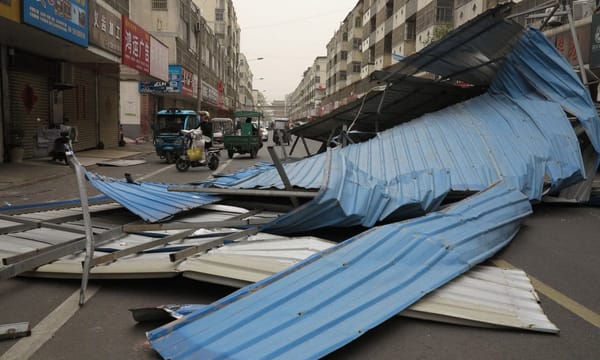Europeans ordered to stockpile emergency supplies as NATO warns of imminent threat

Europe is preparing its citizens for war - but will anyone actually listen?
For millions of Europeans, the unthinkable is becoming reality as governments across the continent distribute survival guides, build bunkers, and conduct mass evacuation drills. The message is clear: be prepared for conflict.
NATO Secretary-General Mark Rutte's words last December still echo across European capitals: "It is time to shift to a wartime mindset." It wasn't just rhetoric - it was a warning that's now being translated into concrete action.
Sweden has distributed millions of survival guides titled "If Crisis or War Comes" to households nationwide. The booklet doesn't mince words, offering detailed instructions on what to do during air raids and even nuclear attacks.
"Go indoors, close all windows and doors and, if possible, switch off the ventilation," the guide instructs Swedes. It advises taking shelter in cellars, garages and underground metro stations during attacks.

Perhaps most chilling is the matter-of-fact way it addresses nuclear weapons: "Take cover as you would during an air raid. Civil defense shelters provide the best protection," adding that "radiation levels will lower drastically after a couple of days."
Finland, sharing a 1,340-kilometer border with Russia - the longest of any NATO member - has been preparing for decades. The Nordic country has built an astonishing 50,500 bomb shelters capable of protecting 4.8 million people in a country of 5.6 million.
The European Commission itself has urged all citizens to stockpile enough food and supplies to last at least 72 hours in case of emergency, while Germany has updated its Framework Directive for Overall Defense with detailed instructions on how daily life would transform during wartime.

But a crucial question remains: Will citizens actually take these warnings seriously?
For countries with recent historical memory of Russian aggression - like Finland, which lost territory to Russia in the Winter War, or the Baltic states, which were Soviet-occupied until 1991 - the threat feels tangible and real.
"The existential threat, the fear of being overrun, of disappearing from the map, is very real in the Baltic states," explains Claudia Major, senior vice president for transatlantic security at the German Marshall Fund.

For Western European nations, whose citizens have lived in peace for generations, the warnings might sound like alarmism. Previous civil defense campaigns, like Britain's infamous "Protect and Survive" guidance during the Cold War, were widely ridiculed for offering seemingly naive advice like whitewashing windows to reflect heat from nuclear blasts.
Today's guidance is more sophisticated, addressing psychological resilience alongside physical preparations. But without the lived experience of conflict, many Europeans may still dismiss these warnings as government overreaction.
"The fine line to walk obviously is to increase preparedness without going into alarmism and catastrophizing," Major notes. "We want people to be aware, we don't want them to be freaked out."
With Russia's war in Ukraine now entering its third year and fears that Vladimir Putin could have ambitions beyond Ukraine's borders, European leaders are sending a clear message: the threat is real, and civilian preparedness could be the difference between resilience and collapse.
As one Finnish civil defense instructor bluntly put it: "If the society is not willing and not ready to support a war like the Ukrainian society is doing at the moment, we will not prevail.




